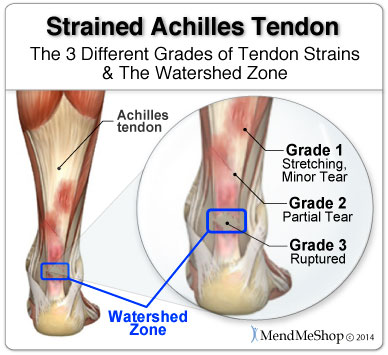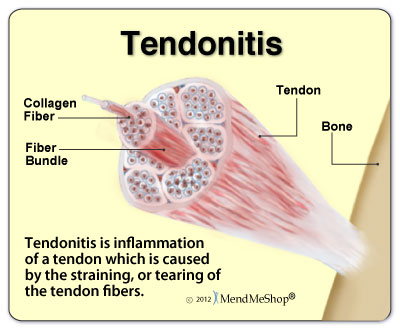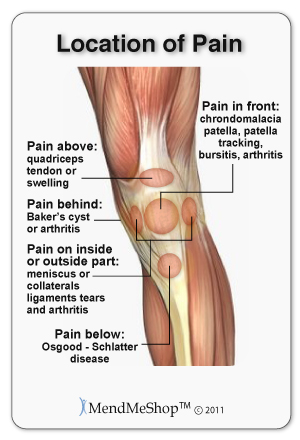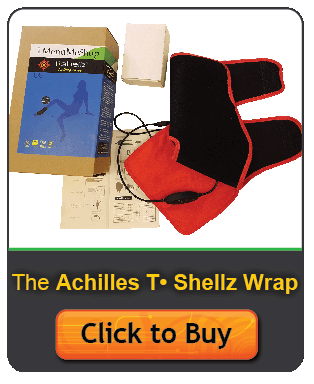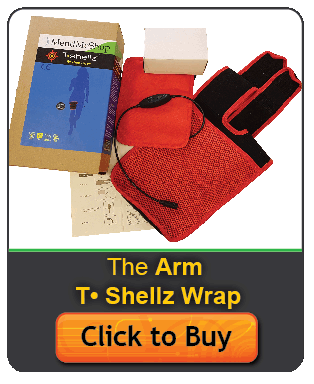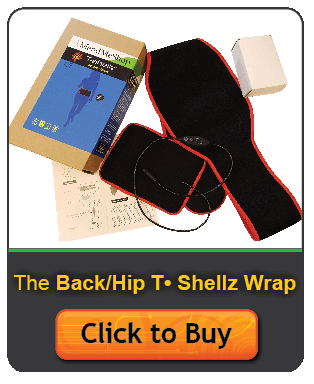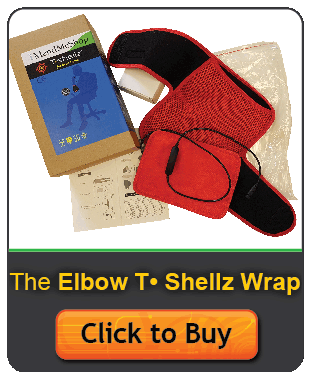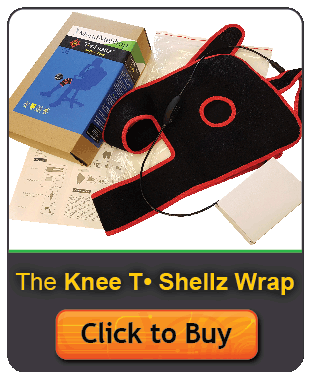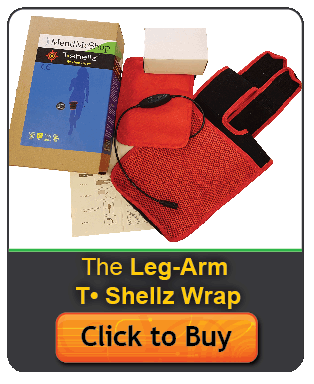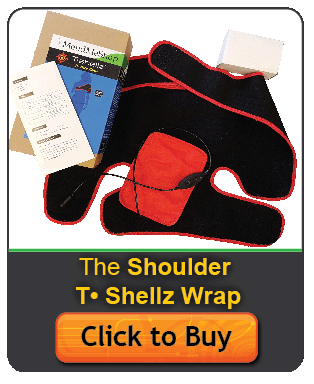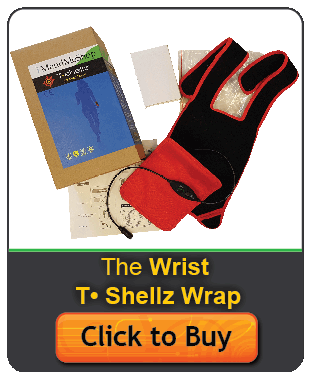|
More Tendon Facts:
Tenosynovitis is a condition affecting the sheath that surrounds a tendon. In many cases, the sheath encounters tearing due to inflammation of the underlying tendon. The majority of tenosynovitis sufferers are female.
A fully ruptured Tendon REQUIRES surgery. It will not heal on its own.
Except for a fully ruptured tendon, Tendonitis can almost always be cured without surgery.
Left untreated, tendonitis can be extremely debilitating and lead to life long complications.
Continually using your Tendon while it is injured will lead to a worse injury.
To Heal as fast as possible use conservative treatment options at home such as: Rest
Use an Ice Pack to Get Swelling Down
Use a TShellz Wrap at Home Once Swelling is Down
Stretch at Home Once Your PT or Doctor Approves
Treat the Injury Well Beyond the Point After the Pain Disappears
|
Dealing with Acute Tendonitis
What is Acute Tendonitis?
Our bodies use tendons everyday to stretch, pull and move. Tendons are cord-like pieces of soft tissue that connect our muscles to our bones. We have about 400 tendons in our bodies.
Overworking or overloading one area of the body can cause small microscope tears in the tendon. Your body responds by inflaming the tissue to try and heal it, creating a condition known as acute tendinitis. This is your body's way of telling you that you're putting too much stress on your muscle or joint. Your tendon will repair itself quickly if the damage is only slight or is caused by something that may only happen occasionally. If the damage causing your acute tendonitis happens frequently, the pain will continue and the condition may turn into chronic tendonitis.
For some people it may even take weeks or months to get a proper diagnosis and figure out what's causing your pain. For those people, treatment and healing will take even longer because you may spend weeks or months treating an area that's not the true root cause of your symptoms.
If it's now been 3 to 4 weeks with this injury and the pain is still there you could be resting your injury too much, not resting it nearly enough or still waiting for a proper diagnosis on your condition. Even while waiting for a diagnosis, rest is very important for the first few weeks of an acute tendonitis injury. Resting the area and using a Cold Compress or Ice Pack will most likely make a big difference by stopping the damage that's happening to your tendon. Stopping the amount of damage going on in your tendon should be your first priority because it will help to minimize the total amount of time needed to heal.
Once the swelling is gone, moving the tendon and applying a local circulatory stimulation device like the TShellz Wrap® is really what is needed for completing the recovery cycle. This is critical because tendons are known to receive very little natural blood flow and blood flow is really how your body is able to heal itself. When the tendon tissue is damaged, the already-reduced blood flow is decreased down to a trickle which is why movement is encouraged - it helps get blood flow to where it is needed.
Blood flow (healthy circulation) is an important part of natural tissue healing. Injured tendons take the nutrients available in local blood flow (like oxygen and healing agents) to get rid of any damaged tissue and start growing healthy tissue.
Sometimes Tendons Can't Receive
Enough Natural Blood Flow
In some cases of acute tendonitis, the micro-tearing is located in an area known as the watershed zone.
The watershed zone is basically a part of the tendon that has the weakest amount of blood supply (even when it's completely healthy with no tears). This area usually gets blood supply from peripheral veins. This reduced blood supply makes the watershed zone an area of your tendon that's prone to injury and a poor healing response.
Many tendons in the body are known to have watershed zones that are prone to tendon tears. Some of the tendons that have a watershed zone include the Achilles tendon, the posterior tibial tendon in the foot / ankle, the rotator cuff (supraspinatus) tendon in your shoulder, the bicep and tricep tendons in your arm and the flexor tendons in your hand.
What Causes Acute Tendonitis?
There are many causes of acute tendonitis, some of them include:
- Overusing / overloading your arm, shoulder, elbow or knee. This can happen to a retired person working in their garden too long, a well-trained athlete who is pushing themselves too much too soon (or who has poor technique), a factory worker who assembles parts with repetitive actions of the arms or wrist.
- Lifting or carrying heavy objects, participating in sports like lifting weights or having a job that requires you to carry boxes all day can also lead to acute tendonitis injuries.
- Participating in casual athletic activity on weekends or after work. This problem is commonly seen with "weekend warrior" athletes, who sit at a desk all week and then play softball or tennis all day on the weekend.
- Trauma such as a fall or misstep.
- People who are overweight are at a higher risk of developing tendonitis because the additional weight increases pressure on the tendons.
- Some inflammatory conditions (ie. Reiter syndrome or ankylosing spondylitis), autoimmune disorders (ie. type 1 diabetes), and some infections may also put you at risk of getting acute tendonitis.
- Major joints in the body are more likely to be affected by tendinitis. This includes the shoulder (rotator cuff tendinitis), elbow (tennis elbow or golfer's elbow), wrist and thumb (flexor tendinitis, extensor tendinitis, de Quervain's syndrome), knee (jumper's knee), ankle (Achilles tendinitis), and hip (hip flexor tendinitis).
What are the Symptoms of Acute Tendonitis?
Tendonitis can have 3 stages of symptoms:
Stage 1 - Inflammation to the damaged tendon will cause you to have swelling, warmth, redness or a burning pain. You may feel pain and tenderness right outside the affected joint.
Stage 2 - The pain is worse when you move the affected area. Stiffness in the morning or after long-periods of rest or inactivity may also occur.
Stage 3 - At this point people usually experience constant pain. This stage is leading to your condition turning into chronic tendonitis.
Anyone can suffer from acute tendinitis, but it's most common in adults due to degeneration of tissue as we age, over time the tendons will wear down. This is where the fibers in your tendons will become weaker - it's just a natural process that happens as we age.
Acute or sudden tendinitis may become chronic or long-lasting if it isn't treated correctly. We rest for a few days and think once swelling or inflammation (the pain) is gone that the injury is better. We also make the mistake of returning to regular activities too soon without proper time for healing. The truth is that healing takes time and after the swelling is gone your injury is not even close to being fully healed.
You might have acute tendonitis if:
- You have pain, swelling, redness or heat sensation, in the area that's injured.
- You've experienced a sudden popping, crackling, or grating feeling followed by intense pain.
- You've fallen, tripped or was in some kind of sudden accident that caused a great deal of pain around one of your joints.
- All movement including your ability to walk, run, jump, carry or pick up objects and other activities you would normally do is reduced or impaired - with a decreased range of motion in the affected area.
- You have an on-going injury that you wish had healed by now, but the pain, swelling and/or inflammation just won't go away.
Who Should Use the TShellz Wrap®
We recommend the use of a TShellz Wrap®:
- If you have injured tendons, ligaments or muscle, then the TShellz Wrap® will provide the all-important function of boosting blood circulation where it is needed most.
- If you are dealing with soft tissue conditions affecting your range of motion such as an impingement or even arthritis.
- If you have a chronic soft tissue condition that has lasted for years- this device is intended to kick start the recovery process and help strengthen surrounding and supporting tissues.
- If you have tight or shortened muscles that are a high risk of strain- this device is designed to heat tissue - a known and proven way to increase length, elasticity and flexibility of muscles, tendons and ligaments. The TShellz Wrap® is basically a home treatment device to reduce your risk of incurring further soft tissue strain.
- If you are still working with an soft tissue injury, the TShellz Wrap® will help relax injured soft tissue prior to work and after a day at the job.
- If you are still trying to enjoy your favorite activities such as gardening, tennis, golf, etc - use the TShellz Wrap® prior to activity to help reduce chances of re-injuring or re-aggravating those targeted tissues.
- If you are suffering from bursitis and want to treat a major source of it (inflammation and damage to tissue surrounding the bursa sac). Through trauma, overuse or degenerative changes, muscle and tendons surrounding the bursa sacs will tighten and constrict. When they do, they place pressure on the bursa, causing it to become irritated. Applying a TShellz Wrap® to the area will help relax tissue in the treatment area, taking pressure off the bursa.
- If you have been to a clinic for some form of massage or stretching and your PT or physician has recommended stretching and/or conservative treatments for home.
- If you have upcoming surgery scheduled for your soft tissue injury, then you will find a blood circulation booster to be a powerful tool after surgery to help surgically repaired tissues recover for long-term health. (once the surgery wound has healed and your physician has given the ok - minimum 6 weeks after surgery)
- If you are experiencing atrophy in your joint and want to reduce the risk of re-injury (or further injury) while stretching - we recommend its use every time before you stretch.
...A Quick Recap of Benefits That Can Be Achieved Via the TShellz Wrap®..
- We have TShellz Wraps® that can fit on the back, hip, leg, arm, shoulder, knee, plantar, toes, wrist and ankle
- It can be used before exercise to warm up the problematic joint to reduce the risk of injury (heat elongates soft tissue and makes it more flexible)
- FDA Registered medical device for use in home or clinics - high quality, 1 year warranty, 60 day trial period (100% refund guaranteed)
- Increases temporary flexibility and length of tissues (reducing the re-injury factor)
- It soothes pain and whisks away toxins
- Carbon fiber Energy Pad is strong, lightweight, and flexible - contours very easily
- A boost in blood flow helps maximize the body's ability to recover from soft tissue damage. This can be beneficial in saving time and money when associated with doctor or physio visits
- A boost in blood flow will maximize the body's ability to recover quickly. This can be beneficial in post-surgery rehabilitation, getting you back to work faster. Do not use until at least 6 weeks after surgery, and only after approval from your doctor.
When Should I Use My TShellz Wrap® During the Day?
The most common question we receive from individuals prior to purchasing is - how many times a day should I be using my wrap and when should I be using them? While treatment plans will differ for each individual and their specific injury, there are general guidelines that should be adhered to.
- Use a Cold Compress or Ice Pack when you are experiencing inflammation (usually after exertion or movement of the injury area).
The TShellz Wrap® would then be used:
- Right after rising from bed in the morning (as this is when it is most stiff)
- Prior to going to bed at night (to relax the area and allow for better sleep)
- Before you know you will be using your injured joint (going to work, driving, typing, etc).
The Key Points To Keep in Mind When Treating Your Injury
Make Sure That Complete Healing is Your #1 Goal
We all know that if the injury was healed, the pain would go away but what about the opposite situation? If the pain is gone, does that mean the injury is better? Unfortunately, this is not always true.
Too many people only focus on suppressing pain symptoms while providing less attention to the true healing aspects of the body. Experiencing less pain, while obviously a good short-term goal, does not equate to underlying healing. Scar tissue can remain for months after one gets to a point of being relatively pain-free. However, as long the weak and brittle scar tissue remains, you are susceptible to re-injury or re-aggravation. Certain motions or movements can cause the weaker tissue to easily tear - resulting in some reversal of the recovery up until that point.
This is why we recommend for people to continue with their doctor or therapist recommended exercises and to continue with mild treatments of the TShellz Wrap® for a period of time - to better ensure complete recovery.
Ongoing treatments to enhance circulation are intended to soothe, relax and promote healing of damaged soft tissue in the application area. T•Shellz treatment also results in the ability of soft tissue to extend further due to the effect of heat on soft tissue. The more extensible your tissues are, the less likely they are to strain or sprain.
Resting The Area of Your Injury Will Help, But Only Temporarily
People tell us all the time, "I was told that if I stay off my feet for a few weeks, my pain will disappear for good."
The truth is, tendonitis pain is usually a culmination of numerous factors, such as repetitive stress, poor posture, acute injuries, and overcompensation issues resulting from other muscle and soft tissue ailments.
It may take weeks or months for these pain triggers to surface. When they , however, merely resting will solve the underlying issues. You need to utilize actions and options that actually treat the source of the pain and help reverse the damage that has been done.
Resting has a role to play, but it is only one small factor in a recovery plan.
Product Advisors are available 9:00 am to 5:00 pm Eastern Standard Time Monday to Friday.
Learn More About Tendon Injuries & TreatmentsI want to learn more about Post-Surgery Recovery I want to learn more about TShellz Wrap® Circulatory Boost I want to learn more about Ice & Heat: Which Is Better For Treatment? I want to learn more about Tendonitis Treatments I want to learn more about Tendonitis Surgery
FREE SHIPPING ON ALL PRODUCTS CURRENTLY ENABLED
60 DAY TRIAL PERIOD
During your recovery, you will probably have to modify and/or eliminate any activities that cause pain or discomfort at the location of your soft tissue injury until the pain and inflammation settle. The more diligent you are with your treatment and rehabilitation, the faster you will see successful results!
|
Tendon Injury Facts:
When the tendon gets inflamed it is known as tendonitis, and when the tendons are chronically overused, it may lead to microscopic tears in the collagen matrix and causes a gradual weakening of the tissues.
Achilles tendonitis is a common injury among runners, as the Achilles tendon is responsible for helping you lift off the ground with each stride.
As computers become ever more important elements of the work place and everyday life, incidents of wrist tendonitis are on the rise.
Oral Medications can mask the pain but do not aid in the healing of tendonitis. Anti-inflammatories and pain killers can mask the pain and indirectly cause tendonitis to worsen.
Ice and Compression treatments are the easiest and most effective treatments for tendonitis.

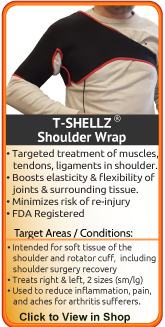




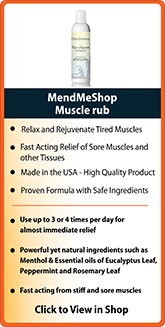

|


















